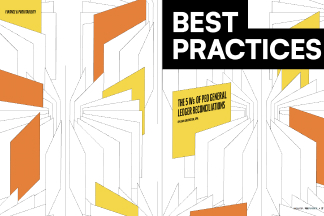

Just as the HR landscape has shifted significantly in the last 25 years, so has the value of a PEO’s services to prospective clients. Two decades ago, most prospective clients came to us for one reason. They were motivated by the cost savings a PEO could provide on employee benefits. The sales process was straightforward – black and white at times. If we couldn’t save them money compared to their current plans, the prospect would move on.
That changed in 2010, though, when the Affordable Care Act (ACA) was implemented. The dynamics related to healthcare changed, as did the complexity of medical benefits. Small businesses were tasked with navigating one of the most complex laws ever passed, despite having limited resources and time.
Our ability to deliver significant benefits savings also changed. What was once a more rudimentary level of underwriting within the PEO industry shifted to a data-driven approach focused more on risk mitigation and compliance. Those coveted benefits savings, while still attainable for some, became less of a certainty.
A SHIFT TO COMPLIANCE
As a result of the ACA and employment laws and regulations that followed, our conversations with prospective clients evolved. Rather than asking if we could save them money on benefits, many began asking about compliance relative to employee benefits, HR, and payroll.
Business owners recognized that navigating the regulatory landscape was becoming increasingly complex, and keeping up with the rate at which employment laws were changing was challenging. To mitigate the risk of noncompliance, they sought help.
Prospective clients – especially small and mid-sized business owners – were seeking expertise and a trustworthy partner who could see the bigger regulatory picture. They needed a clearer understanding of how their employer responsibilities under the ACA would change as their business grows, how to predict employee eligibility from month to month, and how hiring an employee in another state might impact their benefits offerings, handbook, and employer obligations.
In short, they began to realize that a PEO partner could help untangle this complex web of government regulations.
FROM SALES CONSULTANT TO EDUCATOR
As the ACA and increasing labor laws and regulations have ushered in a new focus on compliance, our role as sales consultants has also evolved.
Though more and more prospective clients seek PEOs for compliance expertise, some still come to us with the notion that our main advantage is saving them money on benefits. While that was once true, the value of a PEO has transformed alongside the HR industry and benefits savings aren’t a guarantee for most.
Our most important role with prospective clients – particularly those only interested in benefits savings – is to inform and educate business owners and decision makers about the value of partnering with a PEO.
Sure, we may be able to shave some costs off their benefits or show them plan designs that are more appealing than their current plans. We will certainly take a prospect through the underwriting process to determine what’s possible. But when a prospective client asks if we can reduce the cost of benefits, it is incumbent upon us as professionals and consultants to demonstrate the value of today’s PEO beyond simple benefits savings.
In a conversation, this might sound like:
“We may not be able to cut the upfront costs of premiums, but we may provide a suite of plan offerings with lower deductibles and out-of-pocket costs. Or we may provide consultation on a new contribution strategy that can save you money and still offer great solutions to your employees.
In every stage of the employee lifecycle, we’ll guide you through your responsibilities as an employer with an eye toward labor laws at the local, state, and federal level.
We’ll ensure you’re getting the most out of your benefits plans to improve your ability to attract and retain employees. We’ll provide retirement plan options that fulfill state mandates. We’ll administer them for you, too.
And we’ll do all of that for you – and more – whether you choose our benefits plans or opt to keep your existing plans.”
That’s the true value of today’s PEO, which is arguably far greater than the benefits savings of 20-plus years ago.
THE IDEAL CLIENT
Another key shift in the sales approach for PEOs is recognizing that every prospect isn’t necessarily a good fit for a PEO.
Again, when benefits costs were the main driver for new clients, the process of selling PEO services was more straightforward. It all came down to numbers. But as the industry has evolved, so has the concept of the ideal client.
One of our core values at G&A is to put people first, and we believe client retention improves when we support clients that share this same value. Therefore, a prospective client that is employee-centric is more likely to be a good fit for us. Why? Because, like G&A, employee-centric employers view their employees as a valuable asset, and they strive to provide excellent care for their employees.
Companies that come into a PEO relationship willing to pay for services and expertise because they are committed to being the best employer they can be, are often the prospects that become long-term clients. They are more willing to learn and they are open to suggestions – such as how to improve policies or engagement efforts that ultimately improve company culture and employee retention.
In the end, our goal is to empower our clients – and their employees – to build thriving businesses and achieve their dreams. Finding prospective clients who share our values will help them to see the value in what we do.
-
SHARE
- Copy to clipboard




